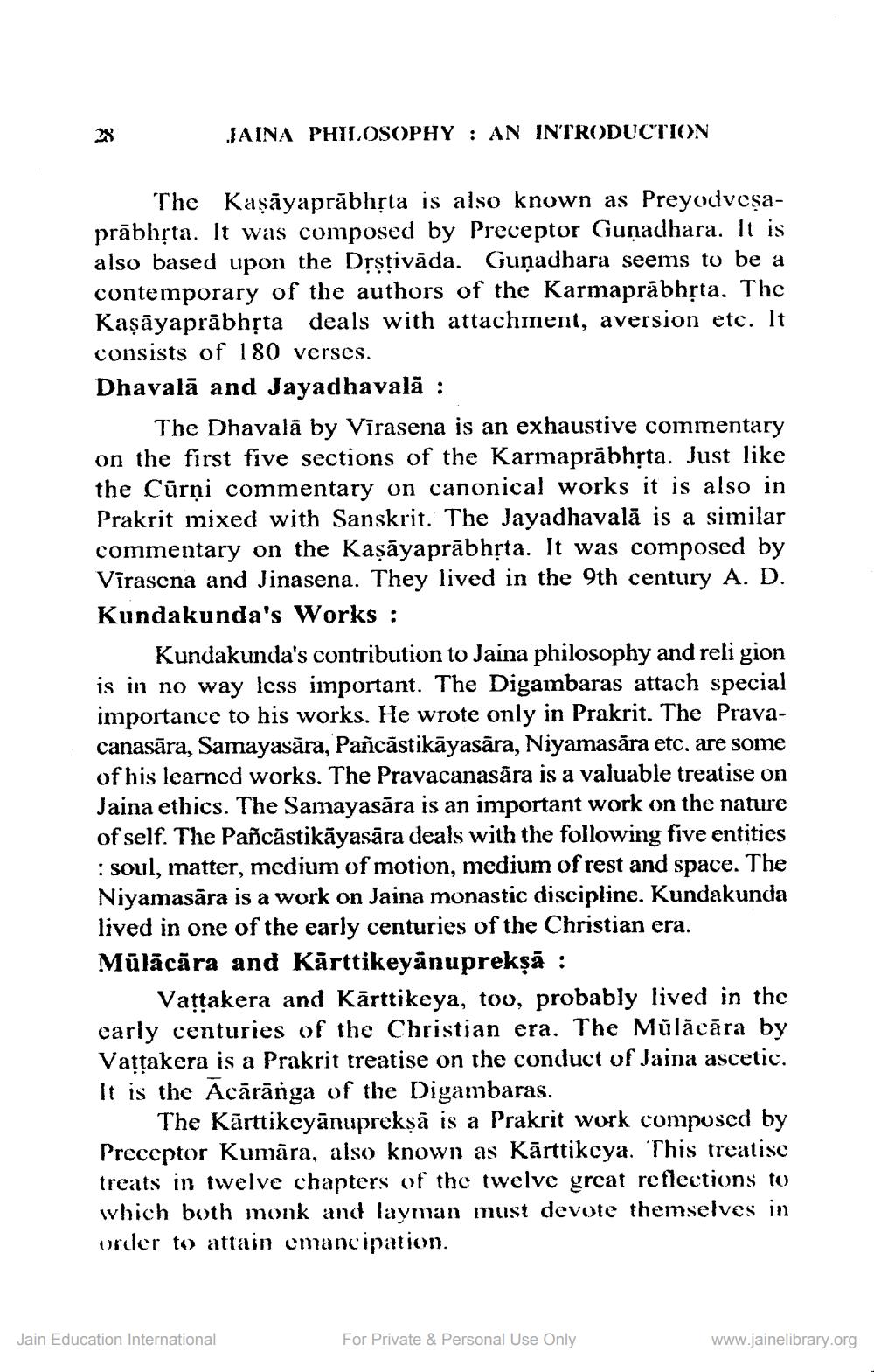________________
28
JAINA PHILOSOPHY: AN INTRODUCTION
The Kaṣayaprabhṛta is also known as Preyodveṣaprabhṛta. It was composed by Preceptor Gunadhara. It is also based upon the Dṛṣṭivāda. Gunadhara seems to be a contemporary of the authors of the Karmaprābhṛta. The Kaṣāyaprabhṛta deals with attachment, aversion etc. It consists of 180 verses.
Dhavala and Jayadhavalā :
The Dhavala by Vīrasena is an exhaustive commentary on the first five sections of the Karmaprabhṛta. Just like the Curni commentary on canonical works it is also in Prakrit mixed with Sanskrit. The Jayadhavala is a similar commentary on the Kaṣayaprabhṛta. It was composed by Vīrasena and Jinasena. They lived in the 9th century A. D. Kundakunda's Works :
Kundakunda's contribution to Jaina philosophy and reli gion is in no way less important. The Digambaras attach special importance to his works. He wrote only in Prakrit. The Pravacanasara, Samayasara, Pañcāstikāyasāra, Niyamasara etc. are some of his learned works. The Pravacanasära is a valuable treatise on Jaina ethics. The Samayasara is an important work on the nature of self. The Pañcastikāyasāra deals with the following five entities : soul, matter, medium of motion, medium of rest and space. The Niyamasāra is a work on Jaina monastic discipline. Kundakunda lived in one of the early centuries of the Christian era. Mūlācāra and Kārttikeyānuprekṣā :
Vaṭṭakera and Kārttikeya, too, probably lived in the carly centuries of the Christian era. The Mülăcăra by Vaṭṭakera is a Prakrit treatise on the conduct of Jaina ascetic. It is the Acaranga of the Digambaras.
The Kärttikeyanuprekṣā is a Prakrit work composed by Preceptor Kumāra, also known as Kārttikeya. This treatise treats in twelve chapters of the twelve great reflections to which both monk and layman must devote themselves in order to attain emancipation.
Jain Education International
For Private & Personal Use Only
www.jainelibrary.org




